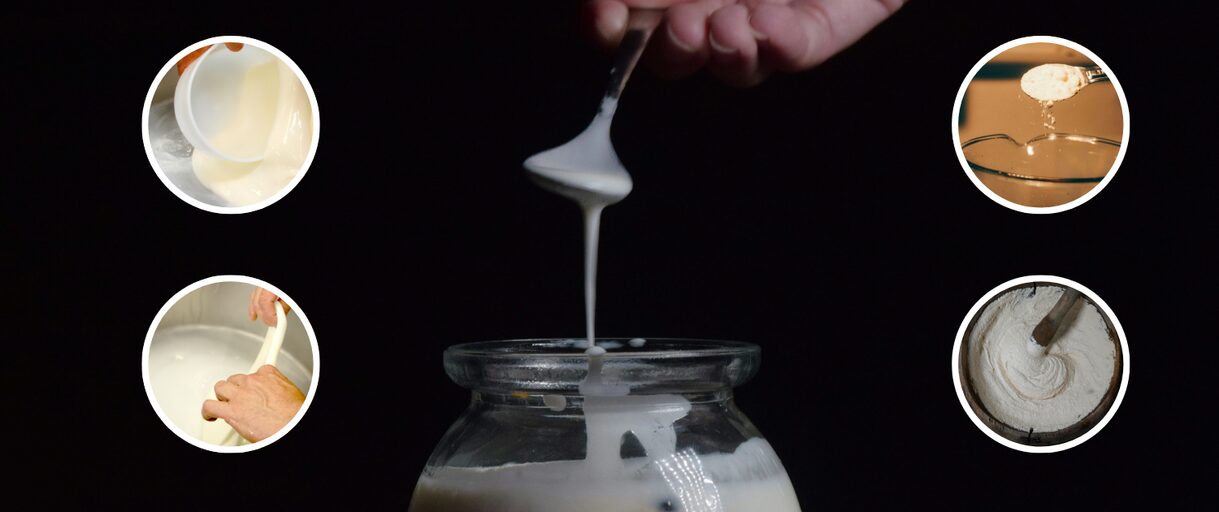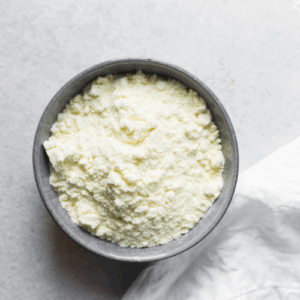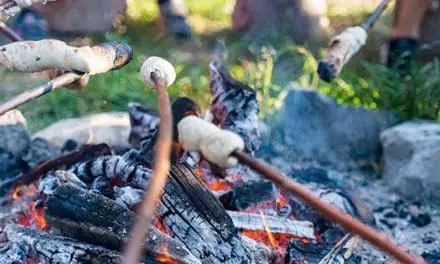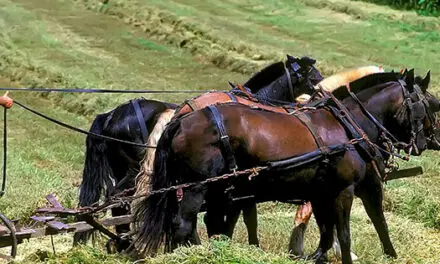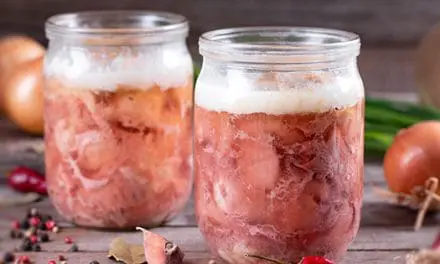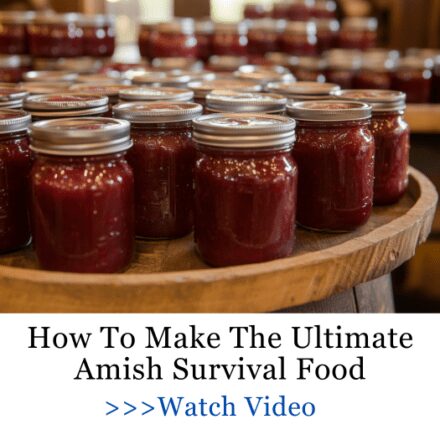Back in the day, people didn’t run to the store every time they needed milk. They had ways to keep it fresh long after the cow had been milked, even without a fridge. Sounds almost impossible now, right? But here’s the thing: those methods worked, and many of them still do. In fact, I’ve found a handful that can keep milk good for months… even years. If the power ever goes out, or store shelves run dry, this might just be the one skill that keeps your pantry from going dry too.
Can Milk Be Preserved?
Having cows on your farmstead is a wonderful experience. You take care of their health, feed them, and they, in return, provide you with a nutrient-rich supply of milk. However, there may be days your livestock doesn’t produce as much milk as usual. This could be due to factors such as health issues, management practices, or environmental stressors.
Life on a homestead can be a bit unpredictable, and as a result, you cannot always plan to go out to buy milk. The best thing you can do? Preserve the freshly collected milk and enjoy it for a long time. Yes, the very milk you get from your livestock can be stored properly using various techniques, and you can have it whenever you want.
Why Preserve Milk While Living on a Homestead?
Homesteading offers freedom, but as discussed earlier, it also comes with its fair share of struggles, which necessitate preserving the harvest. Some of these challenges might include: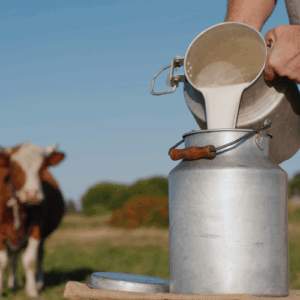
- Unpredictable Seasonal Changes: Fluctuations in weather can often cause your livestock to behave in an unusual manner. Sometimes this change may cause them to produce less milk than needed on certain days.
- Limited Supply Chain Sources: Homesteads are often located in remote areas, resulting in few to no food supply chain sources nearby. Preserved harvest, including milk, can be a valuable aid in these areas. It will keep you free of the worry about whether milk will be available for tomorrow or not.
- Sudden Power Outages: Just like seasons, electricity situations on farmsteads can be uncertain too. Due to short shelf life, fresh milk may get spoiled when not being refrigerated or stored properly. However, when preserved using appropriate techniques, this same dairy can last for a long time.
- Budget Constraints: Living a sustainable life means you have to keep a strict check on your budget. This financial plan is often distorted due to groceries, which may get expensive near homesteads due to limited vendors as well as transport costs. If you have preserved milk at hand, it can help you cut expenses while maintaining a healthy diet.
That’s why I’ve come to see preserved milk as more than just a backup. It’s a key ingredient in making the most of what I’ve got. I recently found a recipe for a meal in a jar that can feed you for a whole week, and sure enough, it called for milk.
Long story short, I like to preserve my milk not just for drinking, but also for rounding out hearty, shelf-stable meals for when I will need them most. Over time, I’ve also picked up a few other tricks that have made a big difference, like how to make the ultimate survival food with a 25-year shelf life, or how to preserve my eggs without electricity for years.
DIY Ways to Preserve Milk
To preserve milk while living on your farmstead, you need to master the following techniques:
🥛Freezing Milk
Can you freeze raw milk to preserve it? Yes, and it’s actually a great way to make sure you have a fresh, healthy supply of milk for months to come. 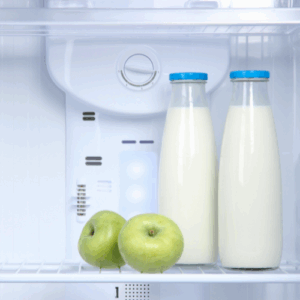
Shelf Life of Frozen Milk
Approximately 6 to 12 months
Tools Needed to Freeze Milk
BPA-free plastic bags or freezer-safe bags, or containers
How To Freeze Milk
Begin by pouring milk into a food-grade plastic bag. Ensure to leave a bit of space at the top as milk may expand when frozen. Label this bag with the present date and then place it in a freezer or even directly in the snow outdoors if any. To use this milk, you just need to thaw and shake it well before consuming it.
If you’re ever looking for an alternative to relying solely on freezers, or if you find yourself in a pinch when the power goes out, there’s a clever little trick I stumbled upon: the Amish-style fridge. It’s a kind of off-grid “fridge” that doesn’t run on electricity at all. It’s not high-tech and it’s really simple to make, but it works, using clever insulation and natural cooling methods to keep things like milk and other perishables fresh for days, sometimes even longer.
🥛Freeze Drying Milk
Can you freeze dry milk?
Yes, you absolutely can freeze-dry milk, and it’s one of the most effective ways to preserve it for the long haul. Freeze-dried milk can last anywhere from 10 to 25 years, making it an ideal method if you want to stockpile for the future or just have a backup supply that doesn’t require refrigeration.
Shelf Life of Freeze Dried Milk
About 10 to 25 years
How to Freeze Dry Milk – Tools Needed
Freeze-dryer machine, airtight jars
Freeze Dried Milk Powder – Procedure
This technique can help you preserve milk for a good long time. You need to start by filling trays with milk and freeze-drying it for about 24 hours. Once the milk is converted to a flaky powder, it can be stored. You may have it in an air-tight container packed, and mix with water whenever you decide to consume it.
🥛Dehydrating Milk
You can dehydrate milk, and it’s another excellent way to preserve it for long-term storage. This method turns fresh milk into a lightweight, long-lasting powder that can be stored for years.
Dehydrated Milk Shelf Life
Dehydrated milk can last up to 10 years or more when stored properly
How to Dehydrate Milk – Tools Needed
Milk dehydrator with tray, airtight containers
Procedure
Another way to preserve milk in powdered form is by drying fresh milk using a home dehydrator. The process here is simple: just fill the dehydrating trays with milk and then wait until the liquid milk turns into powdered form. Store this mix in an airtight container and place it away from heat and light to preserve it for years.
🥛Pressure Canning Milk
Pressure canning milk is a great way to store it for long-term use, whether you’re dealing with a surplus or preparing for tougher times. It is also completely safe when done properly. It’s important to follow the correct guidelines to ensure the milk is heated to a high enough temperature to kill any potential bacteria and then sealed in a sterile jar.
Canning Milk In a Pressure Canner – Shelf Life
1 to 2 years
Milk Canning – Tools Needed
Vacuum sealer, mason jars with lids and rings
Procedure
Start by sterilizing the mason jars by boiling them in water. Now heat the milk up to 180 degrees Fahrenheit. When the milk boils up, turn off the stove and pour it into the jars while leaving about an inch of headspace. Using a dry cloth, wipe the rims of the jars and secure the lids. Now, process these jars in a pressure canner for about 10 minutes.
The milk obtained using this method is generally fit for cooking purposes, but for drinking purposes, the taste might not appeal to everyone.
Is pressure canning milk safe?
Most homesteaders and canning experts agree that yes, you can pressure can milk, but it’s better suited for cooking purposes rather than drinking. The low acidity of milk and its rich nutrient content can also make it a suitable environment for bacteria if not canned correctly. While pressure canning your milk is generally safe and alright to do, improper canning or sealing can still lead to issues.
If you do decide to pressure can milk, be sure to steer clear of these common canning mistakes that can ruin your batch. Simple mistakes like improper sealing can lead to spoiled milk or worse, foodborne illness. When canning any food, including milk, make sure you’re following trusted guidelines, and if you’re new to canning, consider starting with safer, more forgiving foods.
🥛Canning Milk in Water Bath – DO or DON’T?
Canning milk in a water bath is not recommended for several important reasons. Unlike high-acid foods such as fruits or pickles, milk is a low-acid food that can harbor bacteria, especially botulism. The water bath method, which involves submerging jars in a pot of boiling water, does not reach the high enough temperatures required to safely preserve low-acid foods like milk. This is why water bath canning is not an appropriate method for preserving milk.
If you need to preserve milk, you’re better off using the other methods presented in this article, like pressure canning or methods like freezing, freeze-drying or dehydrating. These methods can maintain the quality of the milk and reduce the risk of spoilage.
Bonus Tip: Add a Herbal Touch
Before we had the luxury of freezers or pressure canners, people used what was growing right around them. One old trick that has been kept in my family for generation involves adding herbs like yarrow, chamomile and calendula to fresh milk in order to to help slow down spoilage.
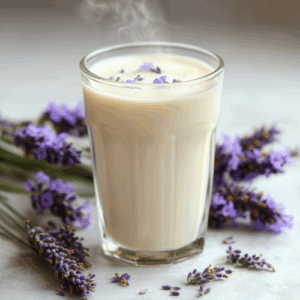
These herbs have natural antimicrobial properties that can slow down spoilage for a short while, handy if you’re dealing with a sudden power outage or just trying to stretch fresh milk for a little longer. It’s not a long-term solution, but it’s one more way our ancestors made do with what they had.
If you’re curious about growing these kinds of herbs yourself, there’s a wonderful Medicinal Garden Kit put together by Nicole Apelian that includes seeds for yarrow, chamomile, calendula, lavender and many other traditional healing plants. It even comes with a practical guide that walks you through how to grow them and what each one is used for.
What I really appreciate is that the kit doesn’t just toss you a bunch of seed packets and leave you guessing. It comes with a full guide that explains how to plant, harvest and use each herb the way our grandparents did. You’ll learn what part of the plant to use, when to pick it and how to turn it into something useful, whether it’s to help soothe a fever, calm an upset stomach, or whip up a quick brew when you’re feeling under the weather.
Mistakes to Avoid When Preserving Milk
Preserving milk is a curated process which requires utmost care and precision. Even the slightest mistake can spoil the dairy product and cause it to go to waste. Some of the things you need to steer clear of are:
- Not Labeling Jars With Preservation Dates: Always label the milk bags as soon as you preserve them. This helps you use the oldest batch first to avoid any spoilage.
- Avoiding Sterilizing Containers: Skipping sterilization of storage jars can cause your milk to spoil even before the preservation process begins.
- Storing Milk at Inconsistent Temperatures: Whether it’s powdered, canned, or frozen milk, consistency is key. Keep your milk away from temperature fluctuations, direct sunlight, or high humidity.
Preserving Your Milk – Final Words
If handled carefully and stored correctly, your fresh-farm milk will last a lot longer than you could imagine. Freezing, freeze-drying, drying, or canning under pressure, there’s a method that will work for your homestead equipment and needs.
The secret is consistency—maintain clean equipment, ideal storage conditions, and safe preservation methods. With a bit of practice and forethought, you’ll be able to ensure that none of your hard-won livestock produce goes to waste.
Happy preserving, and happy homesteading!
10 Canning Recipes From The Amish
The Succulent Red Plant That Tastes Like Bacon (Video)

